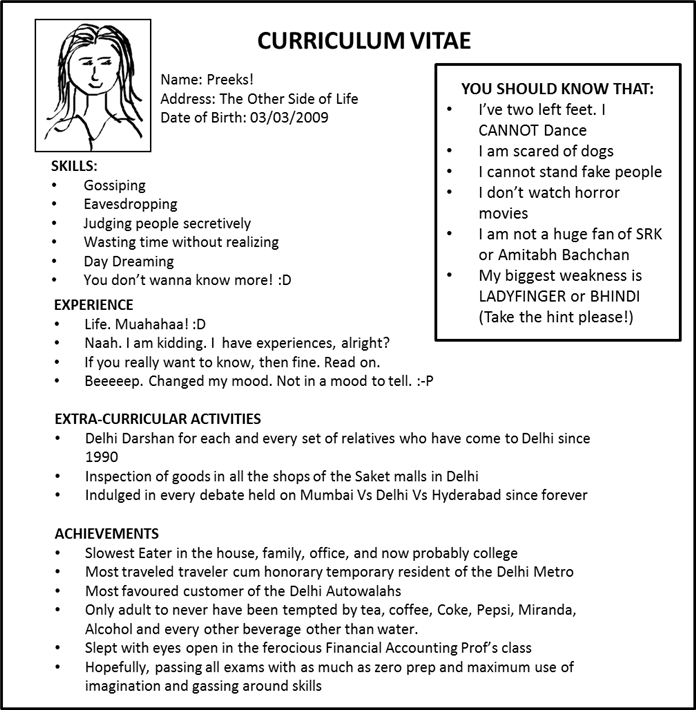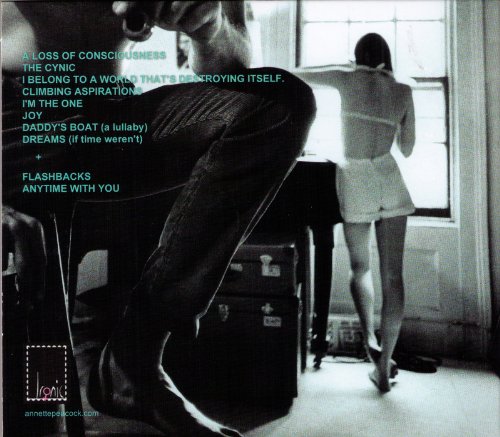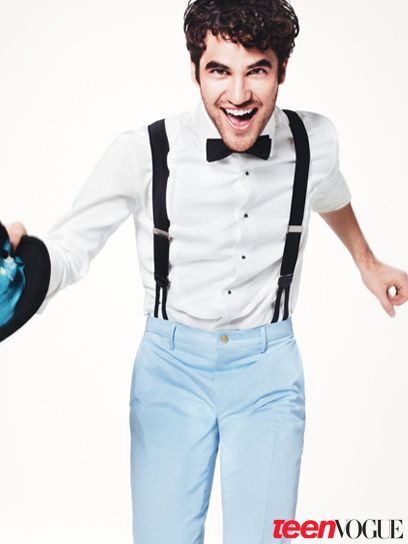How to create a dance resume
What Directors Need to Know—And What They Don't
Artistic directors sift through hundreds of audition packets a season, and your resumé is often your first chance to catch their attention. Naturally, you want a document that makes a positive impression. But some surprising (and seemingly minor) details can inadvertently turn a director off. So, how do you make your resumé stand out—for the right reasons?
Focus on Essentials
At an audition, directors need to see your essential information at a glance: where you trained and what companies and choreographers you’ve worked with. Cincinnati Ballet artistic director Victoria Morgan scans for names she recognizes. “It’s good to know if a dancer has worked with a respected leader in the industry, and if there’s a colleague I can call as a reference. I’m also more inclined to take a second look at a student if I recognize a particular school or teacher,” she says.
Your resumé should be no longer than one side of one page. “When I’ve got 600 resumés sitting here, a three-page resumé is a disincentive to me,” says Kansas City Ballet artistic director Devon Carney. “It comes down to time—how quickly can you present your information to an unknown pair of eyes?”
“I don’t need to know you did ‘Waltz of the Flowers’ for eight years,” says Kansas City Ballet artistic director Devon Carney. Photo by Ken Coit, Courtesy KCB.
As for format, contact information should be at the top of the page. Make sure it’s accurate and up to date: Include your full name, address, phone number and an email address you actually use (and check daily—Carney cites opportunities dancers have lost because they didn’t respond promptly enough). Height is helpful to include, but weight, hair and eye color aren’t necessary. Since employment laws differ for minors, if you’re under 18 (or look like you could be), include your date of birth.
Next, list your work and training history. A common method is to organize everything in reverse chronological order, starting with your current job or school, with separate headings for training and professional performing experience.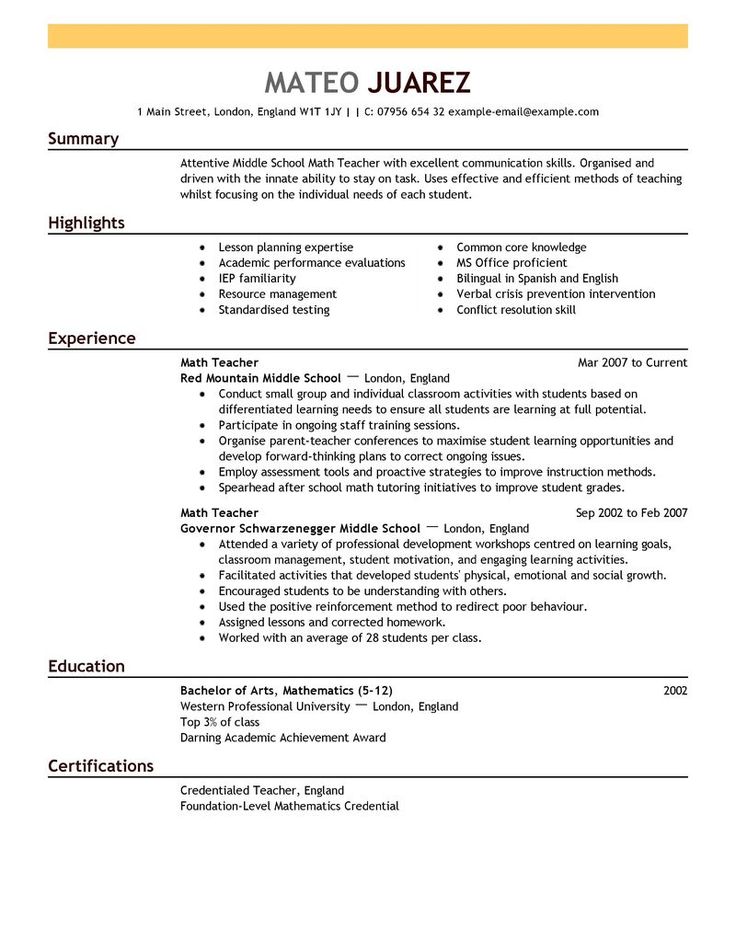 Putting each school, company or choreographer on a separate line using indentations or bullet points makes it easy to read. Repertoire and roles can either be noted alongside the school or company you performed them with or in a separate category. Morgan suggests including a link or two to any standout performances or studio work. List related experience (TV, commercial, modeling or theatrical work, for example), academic degrees, continuing education and any industry-related awards at the end.
Putting each school, company or choreographer on a separate line using indentations or bullet points makes it easy to read. Repertoire and roles can either be noted alongside the school or company you performed them with or in a separate category. Morgan suggests including a link or two to any standout performances or studio work. List related experience (TV, commercial, modeling or theatrical work, for example), academic degrees, continuing education and any industry-related awards at the end.
Pennsylvania Ballet corps member Adrianna de Svastich opts to put her training at the top to illustrate her overall progression. “But it’s really about highlighting what best reflects you as a dancer and what you’re most proud of,” she explains.
De Svastich’s resumé, last updated in 2016, neatly fits on one page.
What Stays Out?
An impressive resumé doesn’t have to—and shouldn’t—include every credential you have, whether you’re an experienced professional or a student with only school shows under your belt.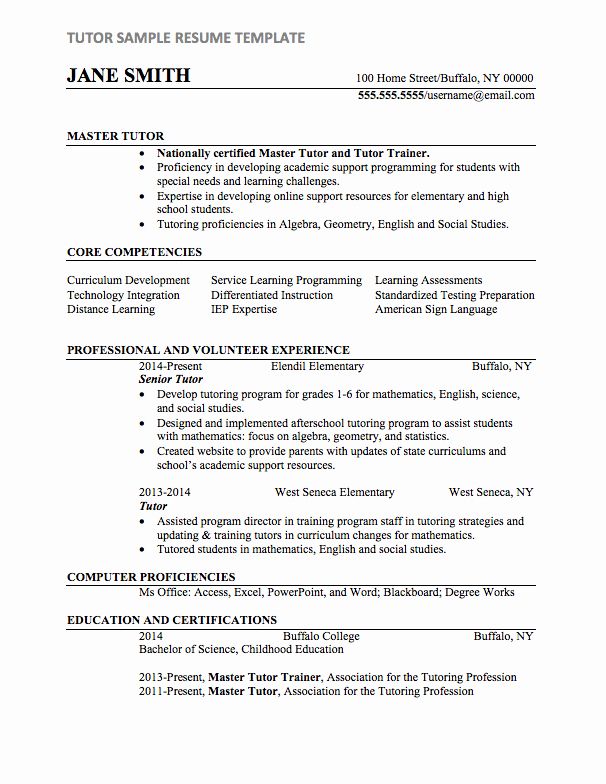 Prioritize what you’ve done and imagine what a director will really care about.
Prioritize what you’ve done and imagine what a director will really care about.
“Pedigree is important when you’re looking at who has influenced a dancer,” says Carney. That means listing the schools that primarily shaped your dancing, but not the studio where you took tap at age 3. Students and inexperienced professionals should include recognized summer programs, but naming the entire faculty (or whether you received a scholarship) is unnecessary.
Listing roles and repertoire gets tricky. Established dancers can fall into the trap of including too much in an effort to show how experienced they are, but an overly detailed list is unwieldy. “I don’t need to know you did ‘Waltz of the Flowers’ for eight years,” says Carney. “When I see featured roles, the assumption is you did corps work, as well. The important thing is to get a snapshot of where you are right now.” If you’ve only danced corps parts, include them, but edit it to highlight the most important or noteworthy ballets.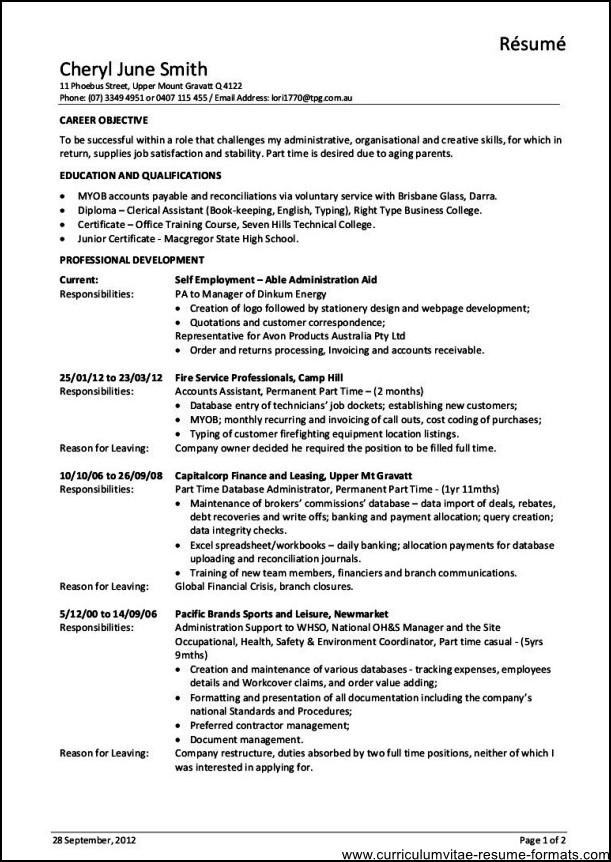
“Too much information may distract from aspects of your training or performing,” says Cincinnati Ballet artistic director Victoria Morgan. Photo by Jennifer Denham, Courtesy Cincinnati Ballet.
As her experience grew, de Svastich narrowed down her repertoire to only featured roles and added freelance projects, as well as film, commercials and her college degree. She includes her choreography work at the bottom.
It’s worth making room for “extras” if you feel they define you as a dancer or as a person. Morgan thinks a college degree signals maturity and independence, while Carney likes knowing if a dancer does volunteer or community work. But don’t overpack it: “Too much extra information may even distract from aspects of your training or performing that are important to know,” says Morgan.
Putting your life’s passion on a single page is hard, but crafting a concise resumé will leave directors with a lasting impression that reflects your achievements and your professionalism.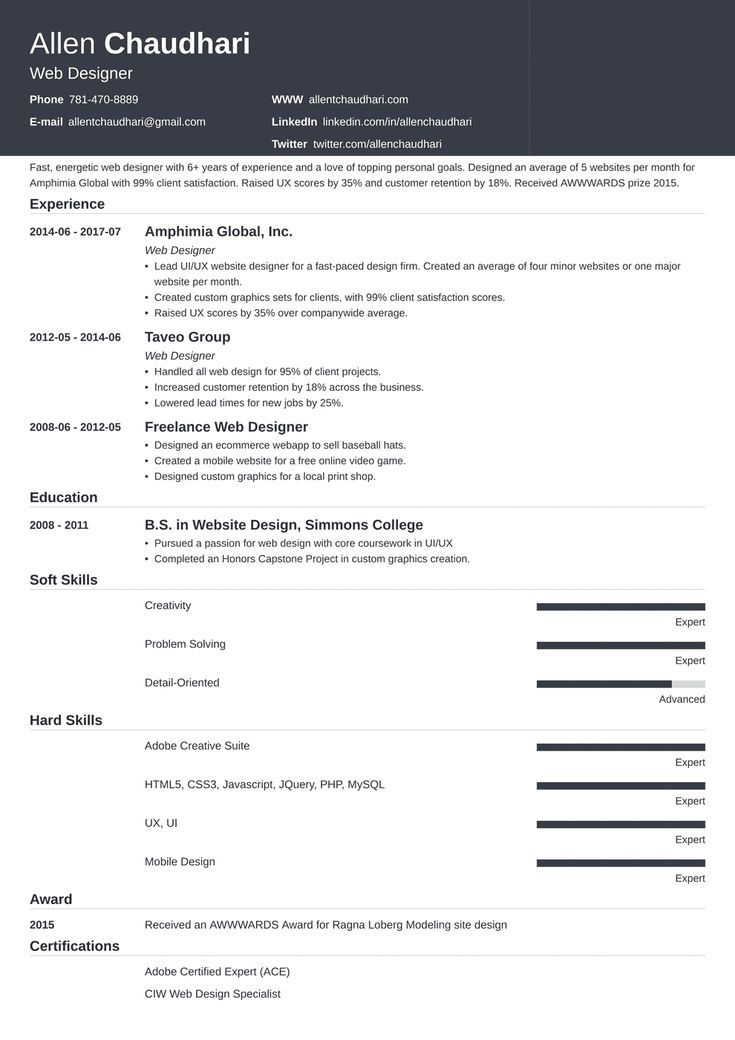
Do:
- Proofread (twice!): Typos signal that you’re not conscientious. “It drives me nuts to see well-known choreographers’ or teachers’ names misspelled,” says Kansas City Ballet artistic director Devon Carney. (“Bournonville” and “Kylián” are frequently misspelled.)
- Include continuing education: Pennsylvania Ballet dancer Adrianna de Svastich includes a William Forsythe workshop she attended as a professional to show her effort to continue growing as an artist.
- Consider adding photos: A thumbnail headshot and dance shot in the upper corner of your resumé makes it stand out and helps a director quickly remember you.
Don’t:
- Mention hobbies and things you’re grateful for: “Resumés that are too full of information won’t hold my interest,” says Cincinnati Ballet artistic director Victoria Morgan.
- Leave unexplained chronological gaps or inconsistencies: Directors will wonder what you’re hiding if they see a time period with no training or work, or two schools attended during the same year.

- Be afraid of white space: If your essentials don’t fill an entire page, avoid plumping it up with extraneous tidbits.
- Include personal Instagram or Twitter handles: Unless you have an account or website that is solely professional, leave it off.
Perfecting your dance resume | USC Glorya Kaufman School of Dance
Rachel Harris (BFA '20) | Photo by Mary Mallaney
Fitting your many years of dance experience onto a single page can seem like a daunting task. In fact, I often get asked if the dance resume can be longer than one page. You can probably guess my answer.
So, why can’t your resume be more than one page? The reason is that, at USC Kaufman, you will define and refine your artistic identity, and we want you to start thinking about how to present yourself now.
It would be impossible to include all of your dance experience on one page, even if the words were in size two font and the page had no margins. Know that what we are most interested in are the highlights of your dance career up to this point—those things that have most impacted you.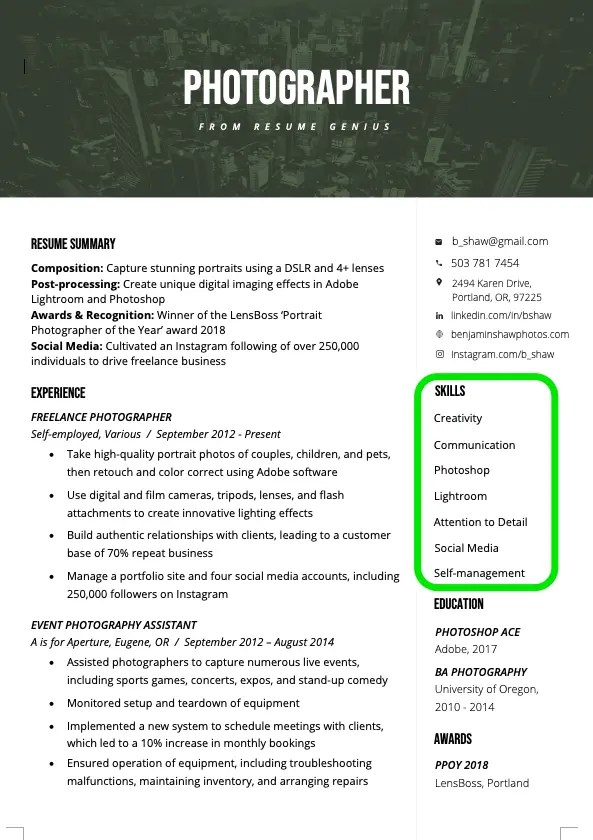
Resume template and specifications
It’s critical that you follow our resume template. We devised this format to ensure that our faculty are able to look at all the information they need in a way that’s consistent across all applicants. Plus, it takes the guesswork out of things for you!
While you might be tempted to showcase your InDesign skills, we ask that you keep it simple. There are a few other specifics to remember:
- Use a standard font.
- Margins should be no smaller than 0.5”.
- Only submit text (no photos please).
- Upload the document on SlideRoom as a PDF (no Word or Pages please).
Resume requirements
What does the faculty committee want to see on your resume? As listed on the template, you should include:
- Your contact information, including your Common App ID number, at the top.
- A one- to two-sentence Statement of Objectives, which provides us with a quick snapshot of your goals.
- Your academic profile, including your GPA and test scores (if you are submitting test scores).
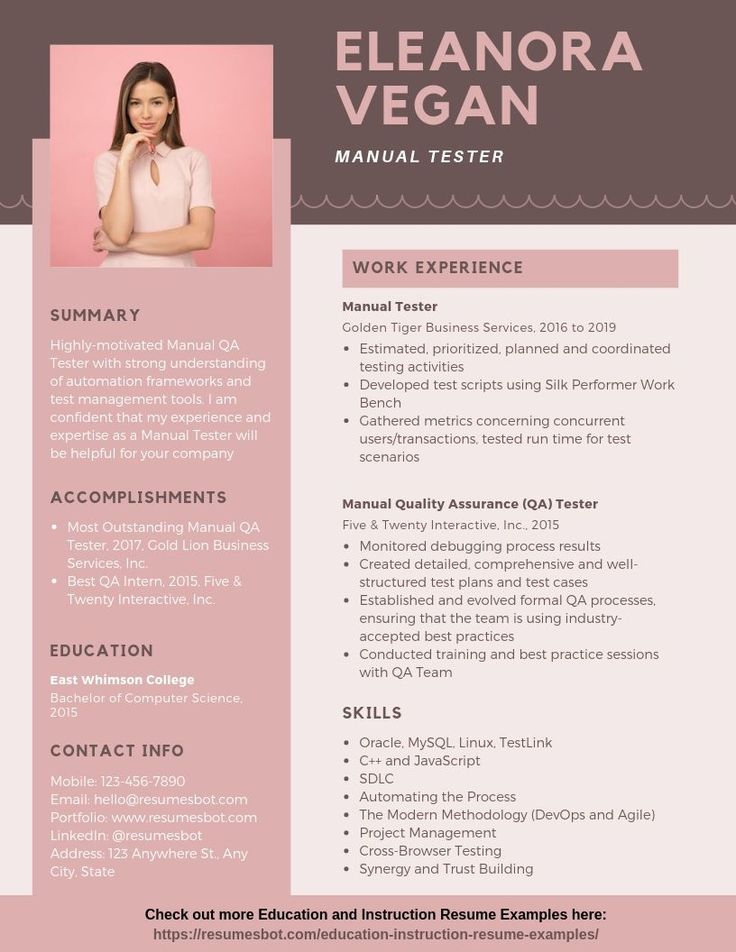 This tells us a little bit about your academic preparation given that we don’t see your Common Application.
This tells us a little bit about your academic preparation given that we don’t see your Common Application. - Your dance training. Here’s where you’ll probably have to make the biggest cuts. Feel free to condense information in a way that makes sense. For example, you might have trained in Contemporary for seven years under seven different teachers; you might consider listing Contemporary for seven years with your most recent two instructors. You should also feel free to add any forms in which you’re self-taught and master classes that have had an impact on you.
- Programs and workshops, including intensives.
- Don’t forget to include any relevant roles under performance experience. In addition, list any performances on screen, including music videos.
- Have you taken part in any hip-hop culture battles? If so, let us know!
- Choreographic experience, if you have any.
- Awards and scholarships – or any other important dance distinctions.
- Finally, other activities you love – because we are interested in getting to know you as more than just a dancer.
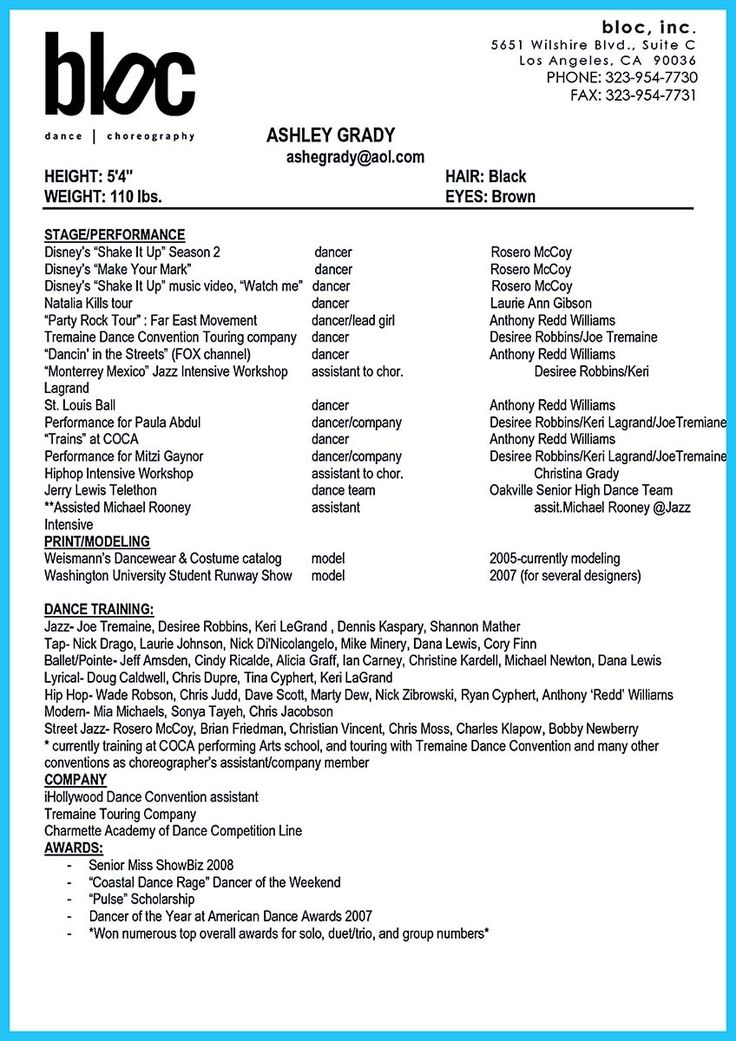 You can list your club involvement, leadership positions, hobbies, and anything else you want the faculty committee to know about you. For example, mine might include, “building dollhouse miniatures” or “collecting clip on earrings”.
You can list your club involvement, leadership positions, hobbies, and anything else you want the faculty committee to know about you. For example, mine might include, “building dollhouse miniatures” or “collecting clip on earrings”.
If there are any sections that don’t make sense for you—for example, if you’re never choreographed or participated in a hip-hop culture battle—feel free to leave the whole thing off your resume.
What we don’t care about are your height, weight, eye color, age, etc. This is The New Movement after all!
Most importantly, don’t use Comic Sans, as I have a love/mostly hate relationship with the font.
Want more admission advice? Watch this video about the USC Kaufman Portfolio and visit our Admission Advice playlist on YouTube.
By Anne Aubert-Santelli, Associate Dean of Academic and Student Life
Sample resume for choreographer | Main responsibilities of a teacher
The application form is used as the main tool for finding vacancies.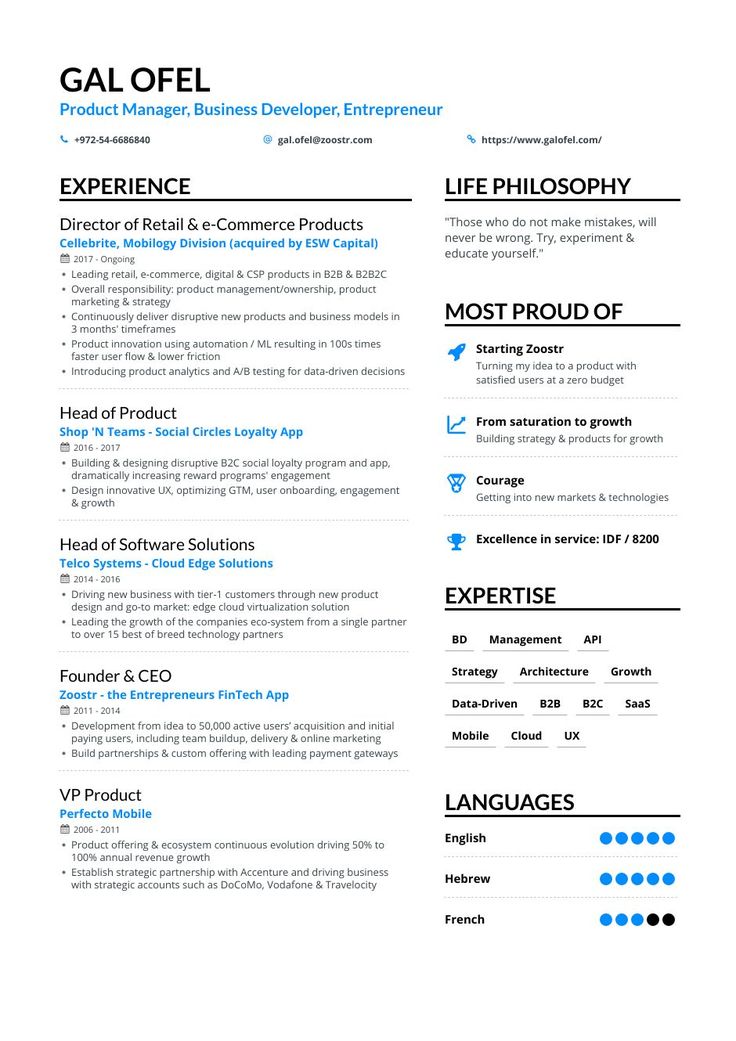 The form mentions the advantages and professional competencies of a specialist.
The form mentions the advantages and professional competencies of a specialist.
A correctly completed document increases the chances of success. An example on the MyResume website will help you properly format a choreographer's resume.
Choreographer resume example
Rate the resume:
average 5.00 (4 votes)
Loading...
- Actress
- Photographer
- Tourism Manager
- Event Manager
- Music teacher
- Vocal teacher
- Dancer
General guidelines for preparing a resume
The form should contain key information that will allow the employer to quickly select the best candidate. It contains information that is primarily of interest to personnel officers:
- A list of basic skills that help to successfully cope with job duties (dance directions).
- Interesting developments, knowledge, awards that give the candidate an advantage over competitors (participation in dance competitions, concert programs).
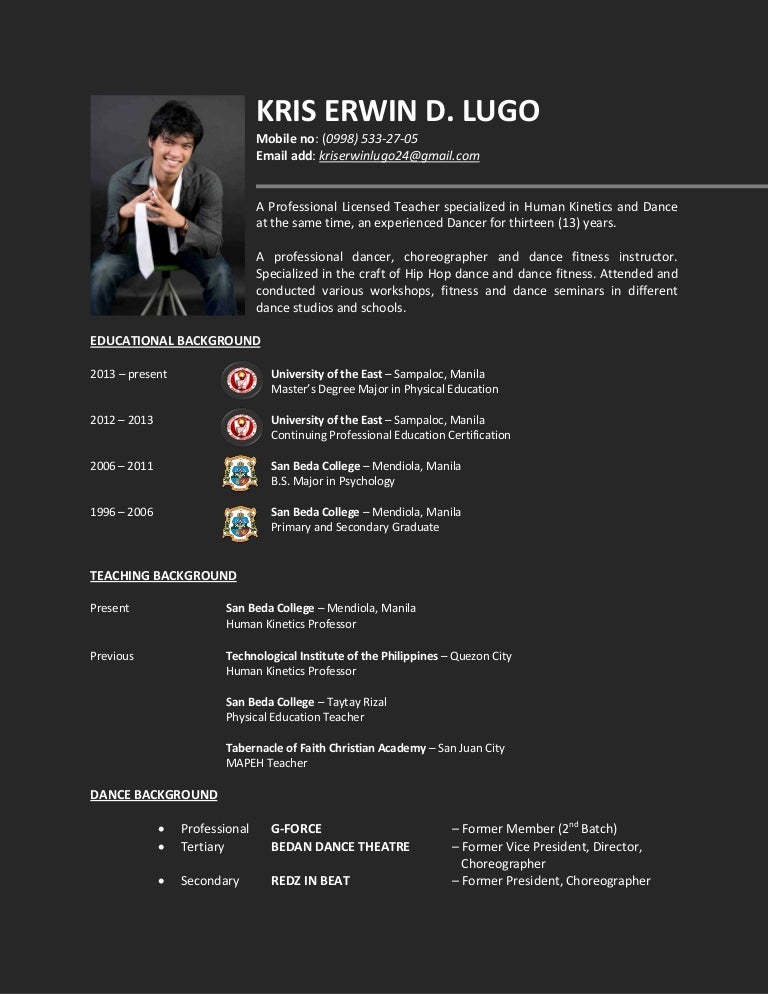
- Basic education, qualifications, experience, additional courses (learning new styles).
- Contacts for communication: active mailbox, social network page, phone, messenger.
- Desired position.
When filling in the item about the mailbox, you need to pay attention to its name. Characters in email should not add up to offensive or defiant inscriptions:
| is true | incorrect |
|---|---|
| [email protected] | [email protected] |
when the Ulcen is a special focus on the um The rubric format is suitable for mentioning outstanding achievements and positive results of professional activity. Applicants can use it for a mini-presentation. When else will there be an opportunity to brag to the employer. You can use 9 to fill this block.0070 professional choreographer resume template posted in this article.
In order for the employer to have a good impression of the applicant, a high-quality and positive photo is placed on the form.

A photograph on a business letterhead is a noticeable and memorable attribute. It's hard to ignore or forget. Therefore, when looking for a job, this method of eye contact is often used.
About the salary of a choreographer
There are several ways to complete the section:
- Empty field. Option gives freedom of choice, expands the circle of potential employers. This method is suitable for novice teachers who have just completed their education.
- Minimum bar. The method allows to cut off employers with unsuitable offers. A talented dance teacher always knows the cost of his services, so he has the right to set his own price.
Inadequate understanding of one's own importance in the labor market can cause problems with the choreographer's employment. To determine for yourself the optimal salary will help a comparative analysis of the proposals of employers.
Choreographer's work experience
Choreographer's teacher's resume contains the “work experience” block, which is one of the most important.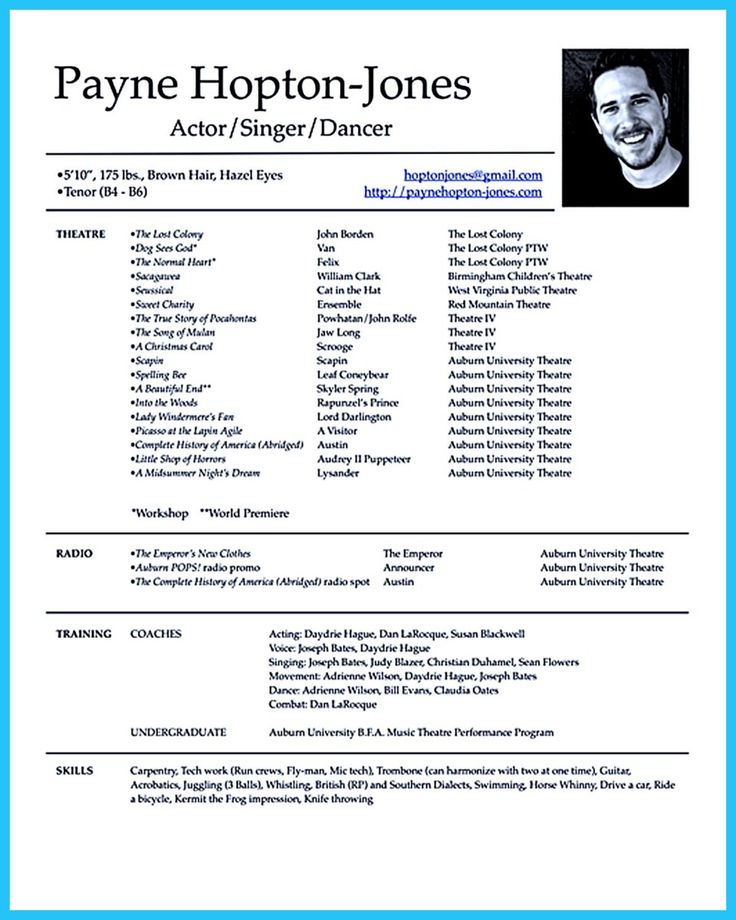 It allows you to more fully assess the professional experience, as well as determine the terms of reference of the candidate for the position.
It allows you to more fully assess the professional experience, as well as determine the terms of reference of the candidate for the position.
The last three years of work are primarily of interest to personnel officers. Therefore, they must be indicated. Working as a dance teacher also involves administrative duties, do not forget to mention this in the application form.
HR officers get a negative impression due to long breaks in work practice, as well as frequent job changes.
Such moments may indicate the applicant's conflict, loss of qualification.
The reasons for long gaps in work experience, periodic layoffs can be written in the section "About Me" or in a cover letter.
If the choreographer has no experience
The resume form for applying for a job as a ballet teacher gives you the opportunity to use advantages that experience does not guarantee. Category "Courses" the applicant can write about trainings, additional classes that allowed him to gain valuable experience.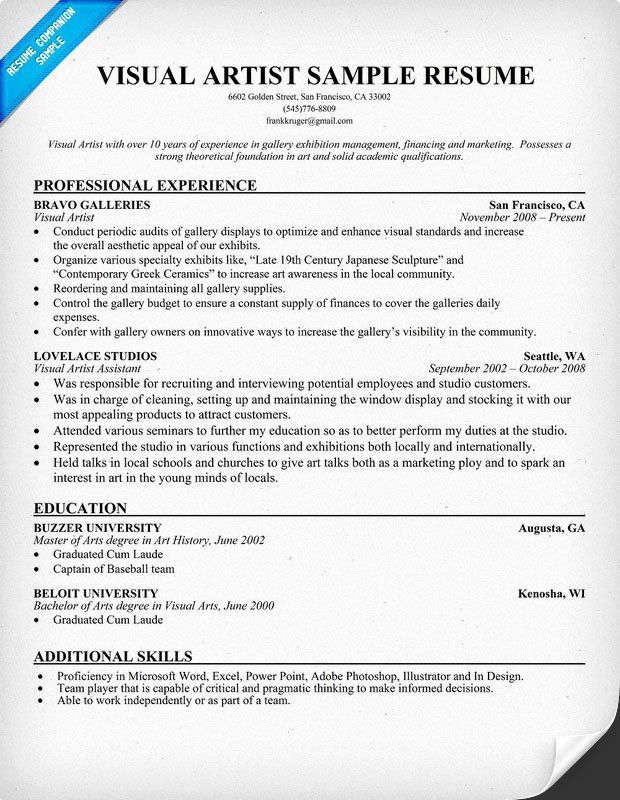 Those who had an internship at the institute can mention the acquired skills in the section of the same name.
Those who had an internship at the institute can mention the acquired skills in the section of the same name.
If you studied with a famous teacher, then this information will be a good illustration of your professionalism. Be sure to include his name on your resume.
Dance teachers often conduct individual lessons that are not reflected in the work book. If you have such a practice, then this can also be considered an experience.
If you find it difficult to get a job… We know what to do! Read our article: Why am I not being hired? The harsh reality that you need to know.
Education of the choreographer in the resume
This block is filled in with information about educational institutions and qualifications awarded after graduation. A specialized education in the field of arts is of great importance, therefore, such information will positively affect the rating of the applicant and speaks of his professionalism.
In the column about courses, they write about additional education that may be useful in the implementation of labor activities.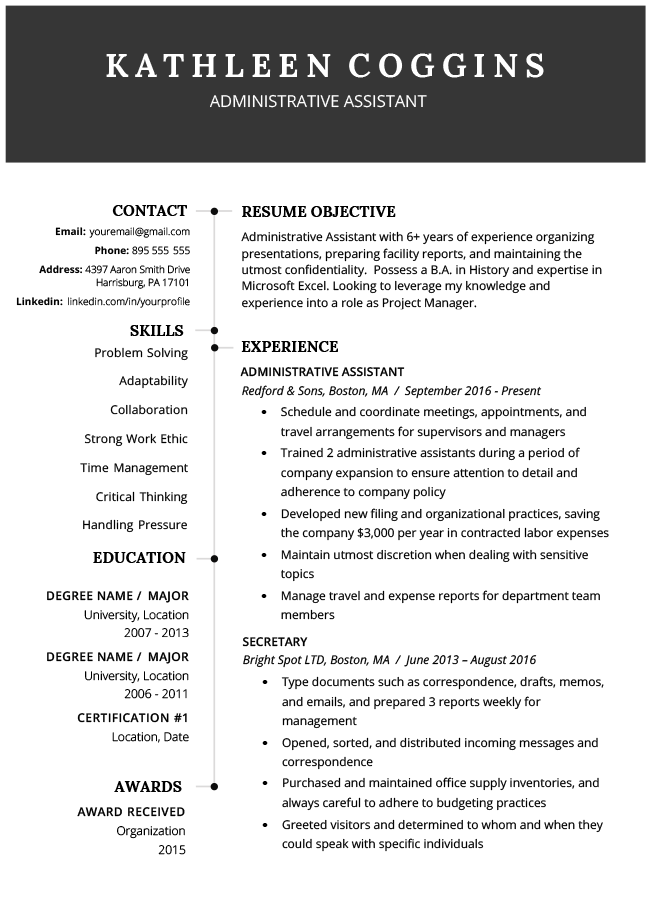
An important section in the questionnaire is the heading “Languages”.
It provides an opportunity to convey information about the candidate's erudition. Knowledge of foreign languages allows you to apply for a place in the studio, ensemble, where interaction with foreign theaters and colleagues is expected. If you have the necessary skills, it is better to fill out this section.
How to complete skills section
The specific skills acquired during training are often the best way to briefly talk about the potential and professional qualities of the applicant at work. For the head of a dance studio, it is important to master different dance styles. The presence of such skills significantly increases the personal rating.
| Classical dances | Staging |
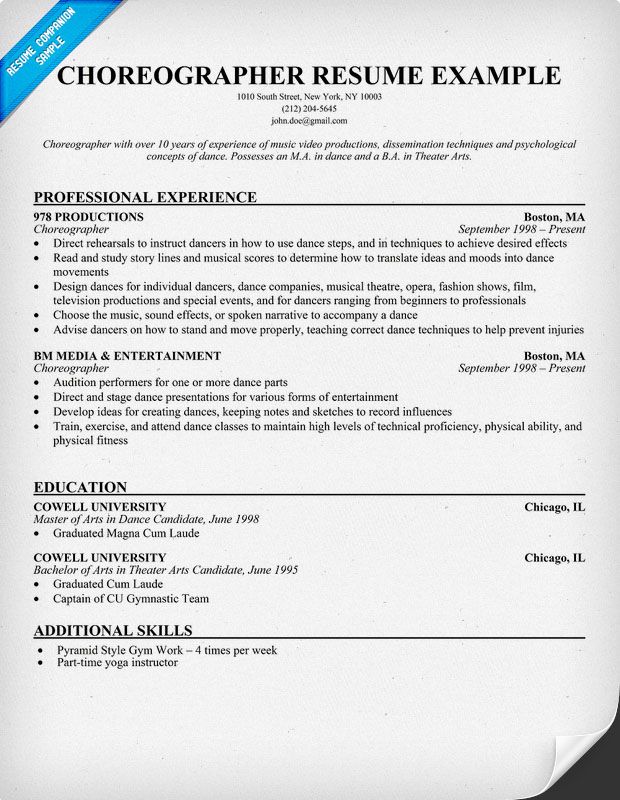
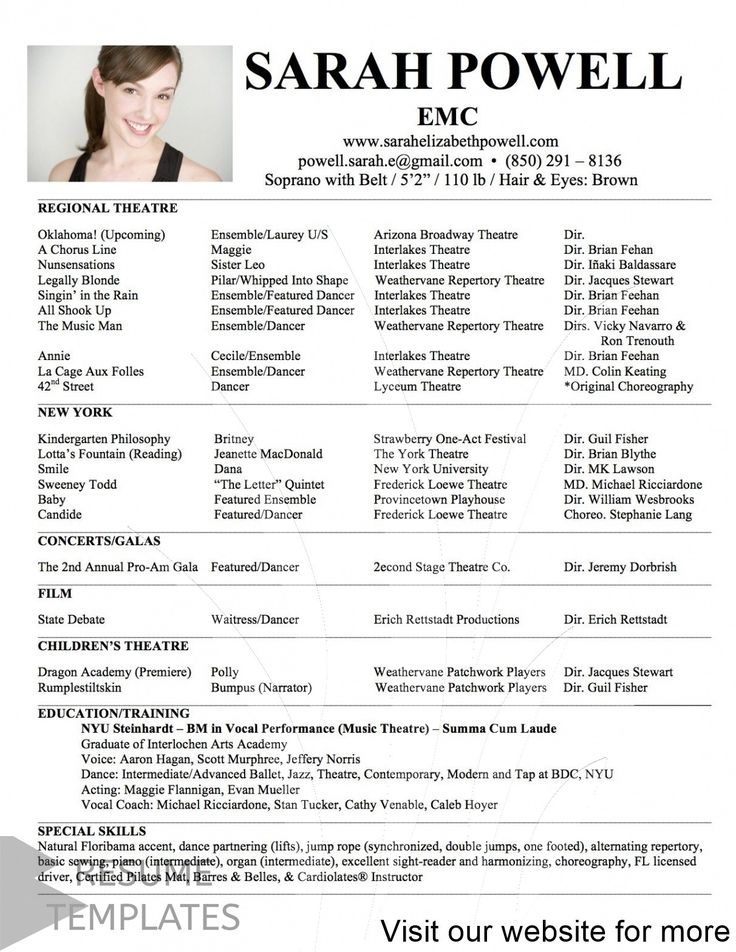 In the resume of the choreographer, it is necessary to remove unsuccessful expressions, typos, unnecessary phrases. On the MyResume website, you can save the form in PDF format, download, print, publish on Facebook, Telegram, VKontakte.
In the resume of the choreographer, it is necessary to remove unsuccessful expressions, typos, unnecessary phrases. On the MyResume website, you can save the form in PDF format, download, print, publish on Facebook, Telegram, VKontakte. 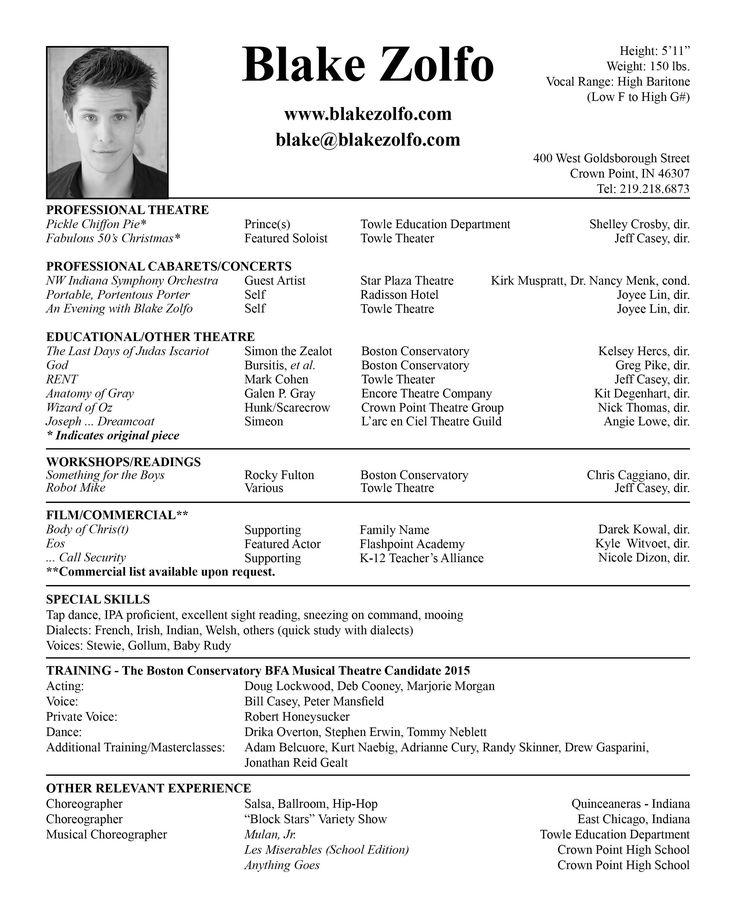
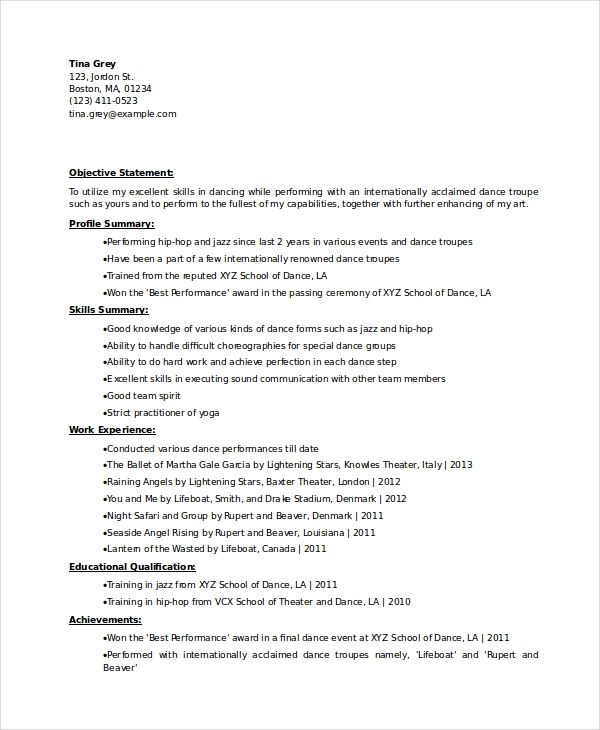 You can get such education in humanitarian educational institutions, where a lot of time is devoted to practical exercises. Therefore, after graduation, the choreographer will be able to find a job, even without practical experience.
You can get such education in humanitarian educational institutions, where a lot of time is devoted to practical exercises. Therefore, after graduation, the choreographer will be able to find a job, even without practical experience. 
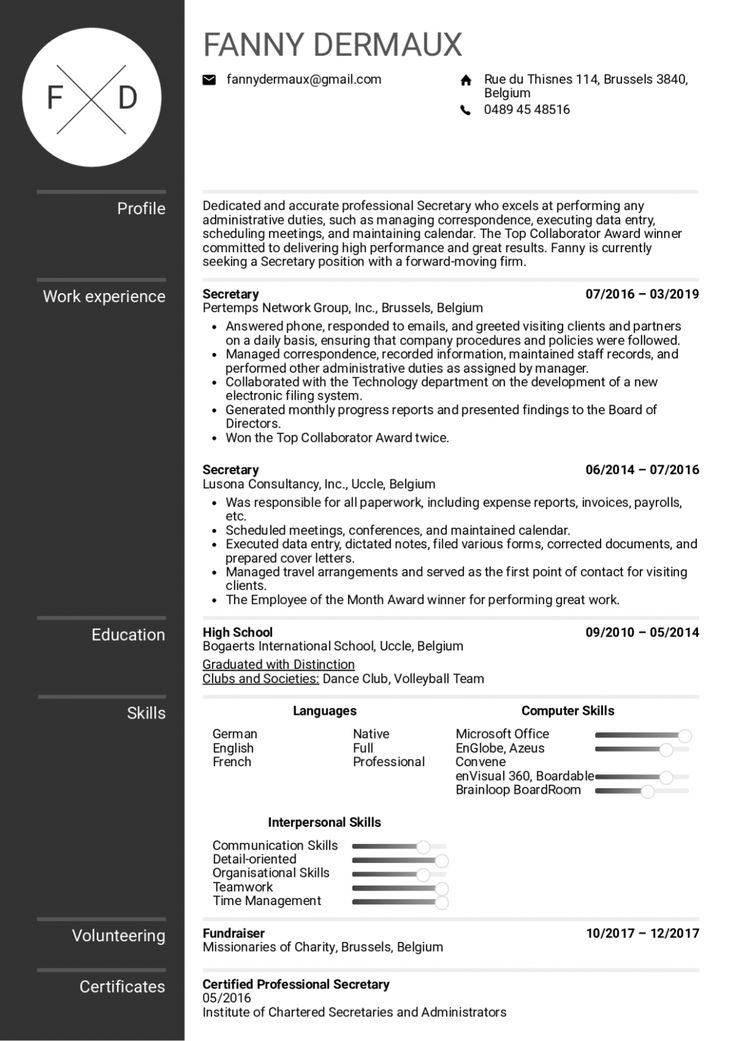 Therefore, when preparing a resume, the following general recommendations should be taken into account:
Therefore, when preparing a resume, the following general recommendations should be taken into account: 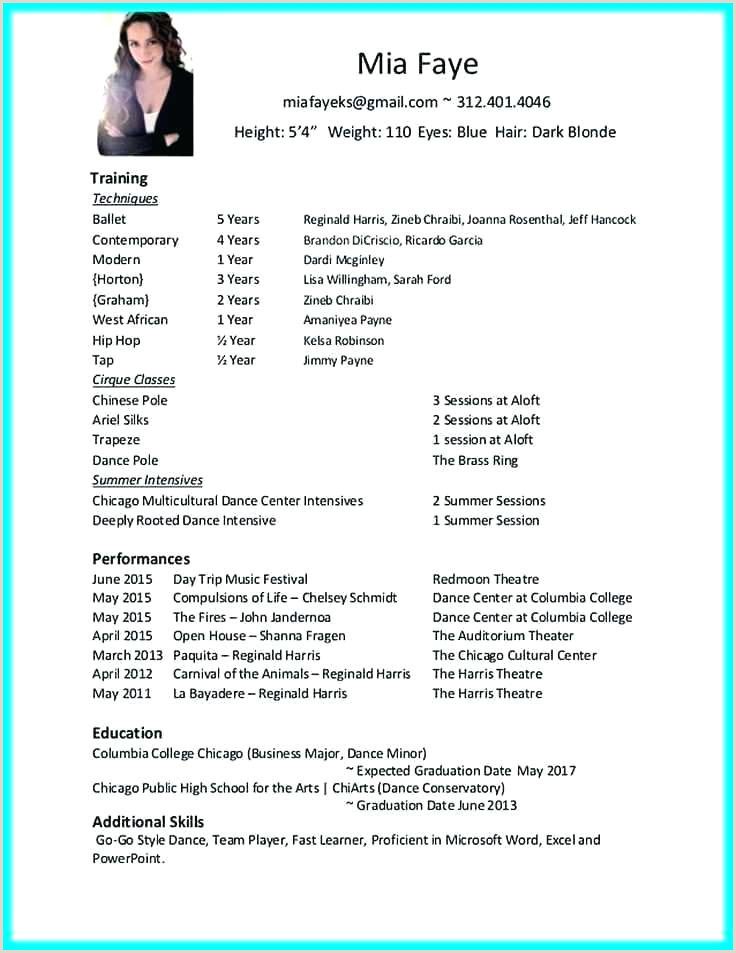
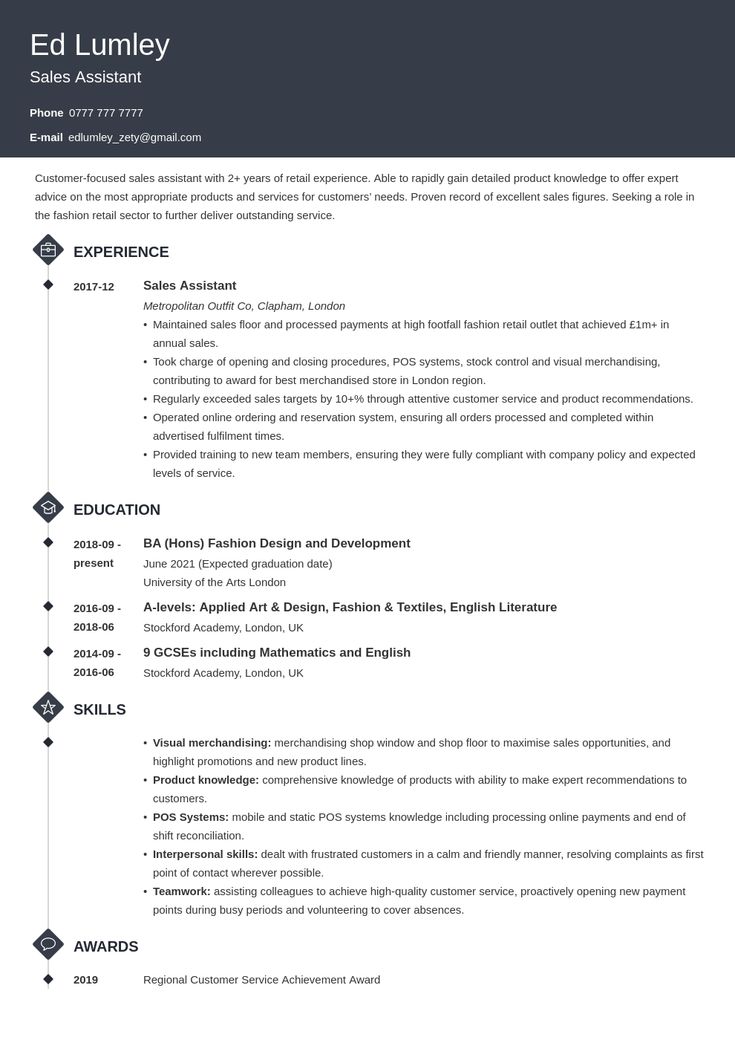
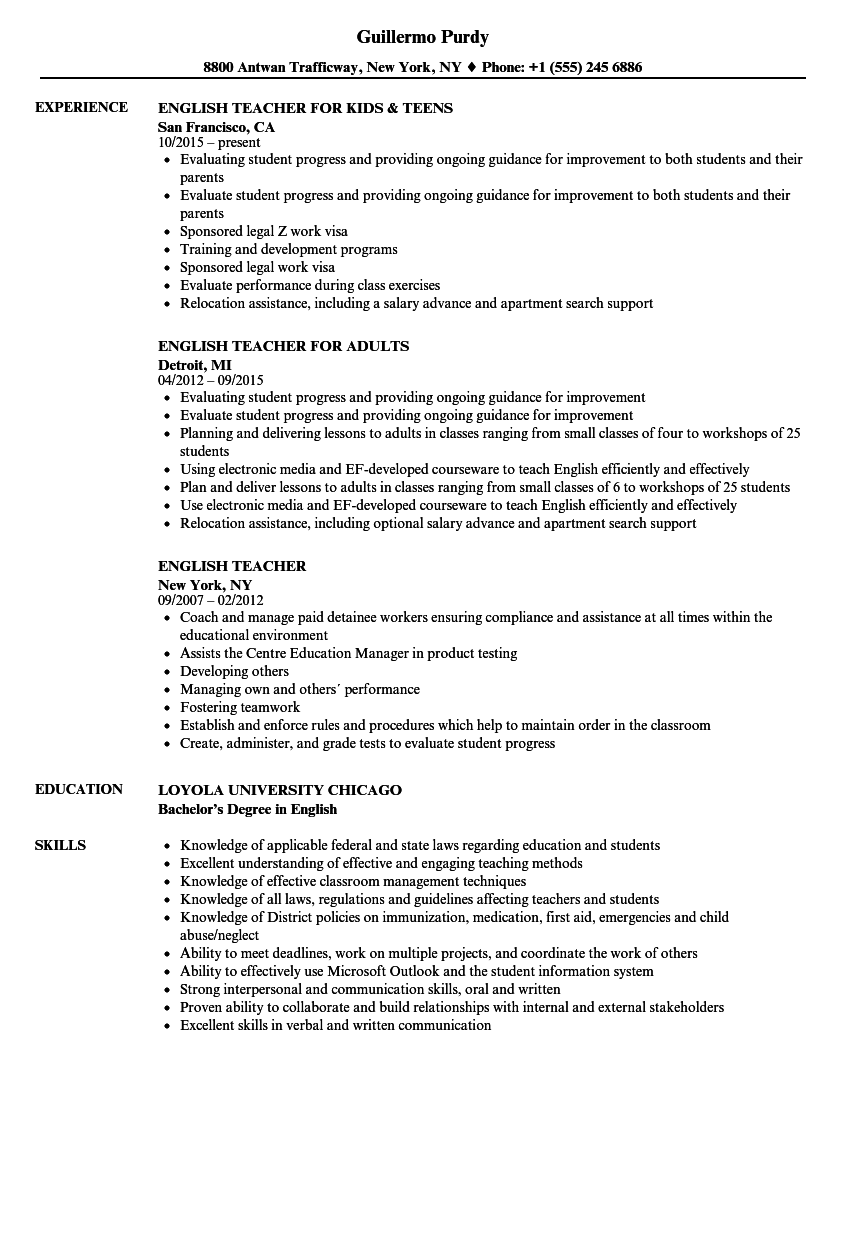
 For choreographers involved in the management of a dance studio, knowledge of various dance styles is an important factor, therefore, having acquired skills will increase the applicant's chance of winning the competition.
For choreographers involved in the management of a dance studio, knowledge of various dance styles is an important factor, therefore, having acquired skills will increase the applicant's chance of winning the competition. 
